Art & Exhibitions
“Charles James: Beyond Fashion” and the Met Costume Institute’s Missed Opportunities
Do museums and fashion go well together?
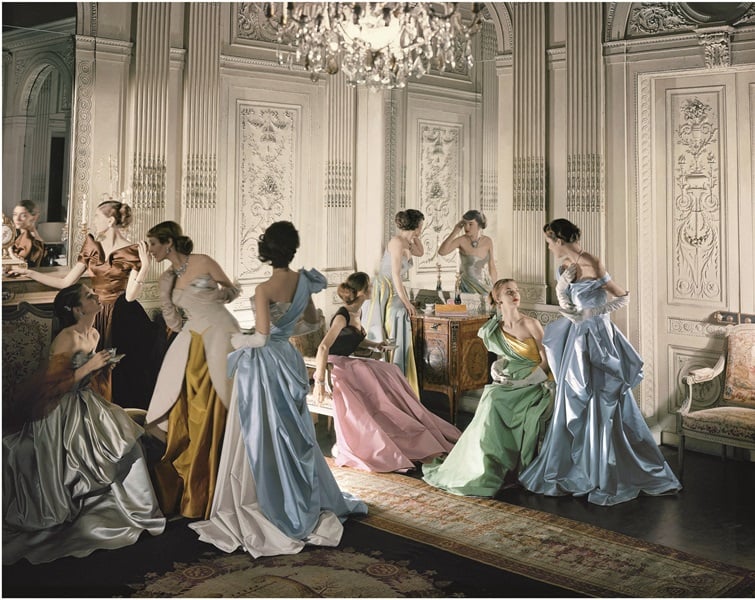
Do museums and fashion go well together?

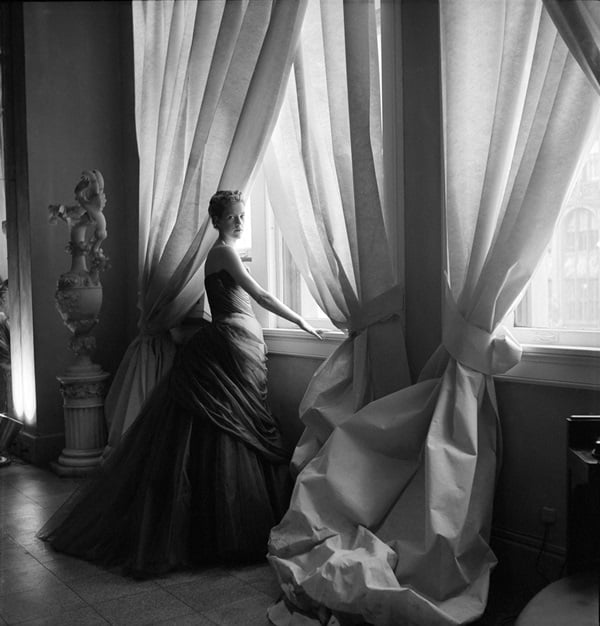
Nancy James in Charles James Swan Gown, 1955.
Photo: Courtesy The Metropolitan Museum of Art, Photograph by Cecil Beaton, the Cecil Beaton Studio Archive at Sotheby’s.
On July 10, the Young Members of the Metropolitan Museum will host their annual gala at the Costume Institute and roof garden of the museum. The Young Members (ages 21–35) group is is designed, to some degree, to hook the next generation of patrons and collectors on the lush and exceptional Met experience, on being supporters of it, and, not incidentally at all, on art.
There’s only one problem: Fashion is not art.
Before I go any further casting aspersions, and mud, at the current incarnation of the Met’s Costume Institute, go see the show, “Charles James: Beyond Fashion.” The clothes are undeniably gorgeous and well-thought-out. The conceits, however, are not.
In the newly named Anna Wintour wing, James’s satin and silks, spotlit in near-pitch darkness, give the mid-century designer’s architecturally-shaped garments the weight of the Dead Sea scrolls. And they don’t hold up, because, really, nothing much could. Prominently displayed on the wall are these words: “Engaged by contemporary art movements, especially surrealism and Abstract Expressionism, James saw his creative output as equal to those of a painter, sculptor or composer…” His “pieces withstand deep analytical scrutiny.”
There’s so much wrong with that paragraph I don’t know where to begin. So, first, let’s cede the floor to more experienced voices:
“Fashion for me is a creative endeavor but it is not art,” said Tom Ford.
Danish fashion star Peter Jensen: “Fashion isn’t art—if it was we wouldn’t have to change it every three months.”
Karl Lagerfeld told the Telegraph, “I am against museums and exhibitions in fashion. One woman said to me—‘In my world, the world of art’—so I said: ‘Oh, don’t you make dresses anymore?’”
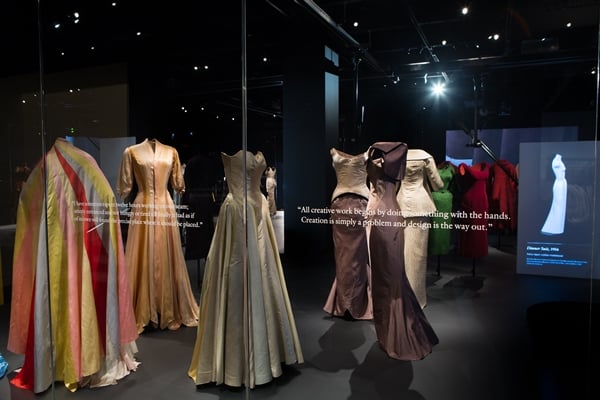
Gallery view, Anna Wintour Costume Center, Lizzie and Jonathan Tisch Gallery
Image: © The Metropolitan Museum of Art.
The Metropolitan is so well aware of the touchy debate that, in one exhibition three years ago, Miuccia Prada and Elsa Schiaparelli, who did not know each other in life, had a fictional debate over it. Prada was quoted: “I always said, for me, fashion is not art.”
Conventional wisdom has held that the Costume Institute has been surrendered to the fashionista set for fundraising reasons; that it is the one area of the museum where it is okay to endorse corporations, so they do. But the “bottom-line conspiracy” theories slight the Institute’s quite-generous donors: They actually believe this stuff matters. Admittedly, the line between art and fashion has blurred in the last two decades. The art world has become more commercial, swept by fads, mass-market, with an emphasis on disposability. But is this to be encouraged?
What harm does it do, really? Actually, a lot. The Costume Institute was long one of the more accessible parts of the institution for children, and one of the few spaces in the museum that engaged in social history. Costume exhibitions were a gateway drug to the Met for a generation of little girls, myself included, and while they sometimes saluted great designers, what were really compelling were shows that were about ideas, movements, times, nations. Consider “American Ingenuity: Sportswear, 1930s–1970s,” or ‘The Ceaseless Century: 300 Years of 18th-Century Costume.” Diana Vreeland oversaw these, plus memorable shows on great dresses from the movies or on Chinese costume. Ultimately, Vreeland, apparently unlike the current curators, found the Hapsburg Dynasty substantially more interesting than the Rockefeller one.
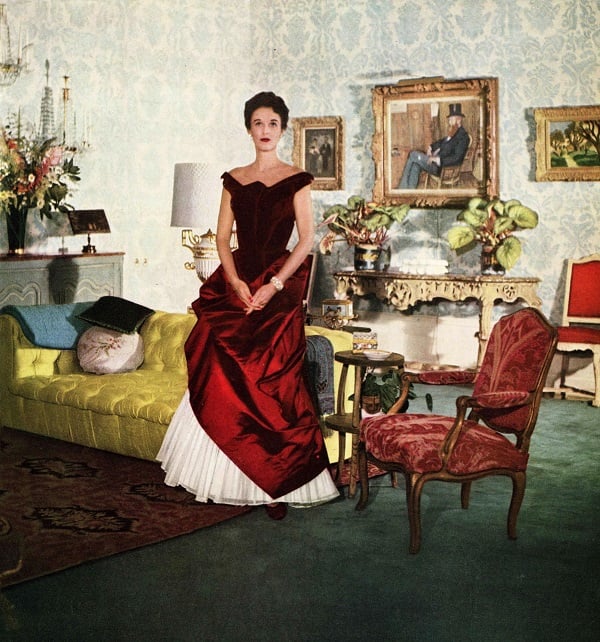
Babe Paley in Charles James Gown, 1950
Courtesy of The Metropolitan Museum of Art, Photograph by John Rawlings,
Rawlings / Vogue / Condé Nast Archive. Copyright © Condé Nast
These shows were often, when it was revolutionary to be, feminist. Charles James is resoundingly not. If anything, a quote attributed to him in the wall text is ridiculous: “We who have been ahead in STYLE [emphasis, theirs] have usually been also ahead in our thinking.” How flattering to the wealthy and well-dressed. It may be true that the Met is fighting bitterly for a handful of fortunes and that society-gown shows are an efficient way to glorify those who control those fortunes. But couture buyers have been in history’s intellectual vanguard? Don’t tell the Bolsheviks.
One longtime employee of the Metropolitan’s education department, now at another institution, notes, “There are many stories to be told” through fashion, but “they focus too much on the fashion business.”
Once we grant that fashion = art, not craft, then we excuse much nonsense in the art world and are on the slippery slope to shoes = fashion = art, and that simply encourages people to spend too much money on them. (Indeed, the Brooklyn Museum has a shoe show upcoming, the aesthetic inferior to a “Costumes of Star Trek” exhibit at the Smithsonian.) There is no spirituality in a Jimmy Choo shoe, and if you disagree with me we have different definitions of religion.
But the Alexander McQueen show was a masterpiece, you say. True enough, but was it the exhibition that was the achievement, or the clothes themselves?
Of course, the new Costume Institute has fit nicely into the new celebrity culture, and if anything, it succeeds far more—wildly even—as an annual party than it does as a museum department. It is fun every year to trump Hollywood at its own game and bring the paparazzi to the Fifth Avenue steps. But can you wallow in shallow without getting it on your skirt?
Perhaps there should be such a thing as the Kimye test: If we are at the same event as Kim Kardashian, isn’t the world trying to tell us we’re in the wrong place?
Art World Report Card runs every Thursday; the writer can be reached at [email protected].
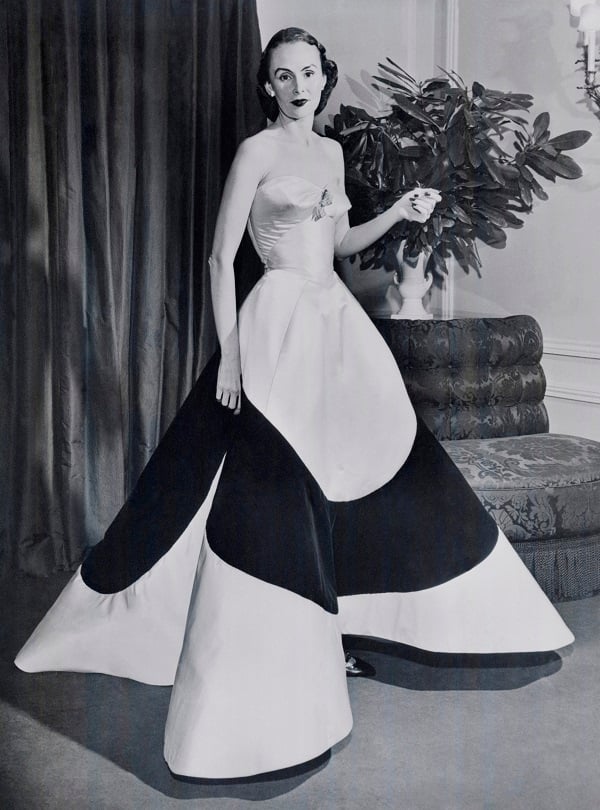
Austine Hearst in Charles James Clover Leaf Gown, c. 1953.
Photo: Courtesy The Metropolitan Museum of Art, Photographer Unknown, © Bettmann/CORBIS